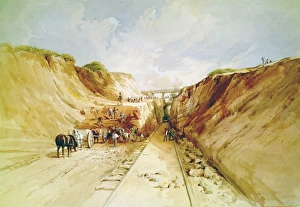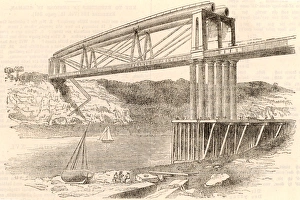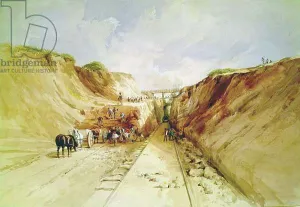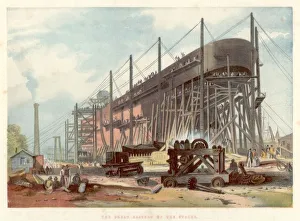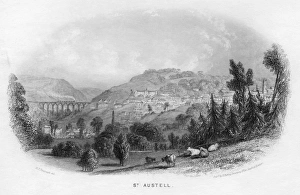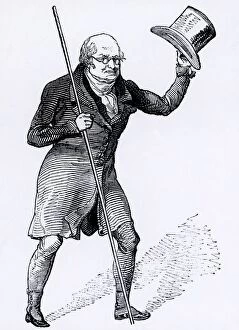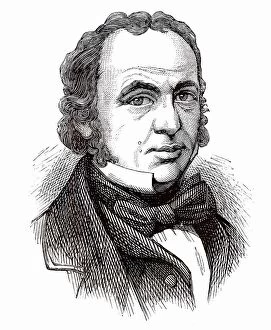"1806-1859: The Legacy of Isambard Kingdom Brunel and the Great Western Railway" Step back in time to witness the remarkable achievements of Isambard Kingdom Brunel (1806-1859), a visionary English civil and mechanical engineer. In 1833, he was appointed as the engineer for the Great Western Railway (GWR), a monumental project that would revolutionize transportation in Britain. One captivating image captures the construction of a railway line in 1841, showcasing workers diligently digging a cutting on the Great Western Railway. This ambitious endeavor aimed to connect cities and towns across England, enabling faster and more efficient travel for both passengers and goods. Another marvel is seen in an iron tubular trussed bridge over the river Wye at Chepstow around 1885. This engineering masterpiece stands as a testament to Brunel's innovative use of wrought iron, pushing boundaries with his designs. Paddington Station, completed in 1854, served as London's terminus for GWR trains. Its impressive iron structure symbolized progress and modernity while providing a bustling hub for travelers embarking on exciting journeys across the country. Brunel's genius extended beyond railways; he also left his mark on maritime history. The colossal steamship "Great Eastern, " captured under construction at John Scott Russell's yard, showcases Brunel's expertise in ship design. With its massive size and advanced features, this vessel pushed boundaries like no other during its time. The South Devon Railway at Dawlish presents another picturesque scene from this era—a track winding through breathtaking landscapes along England's coastlines. Similarly enchanting is St Austell station along Cornwall Railway—later part of GWR—where trains connected communities amidst stunning scenery. Truro offers yet another glimpse into Brunel's legacy—an iconic cityscape transformed by his Cornwall Railway project. His dedication to innovation forever changed these regions' landscapes while improving connectivity between rural areas and major cities.

